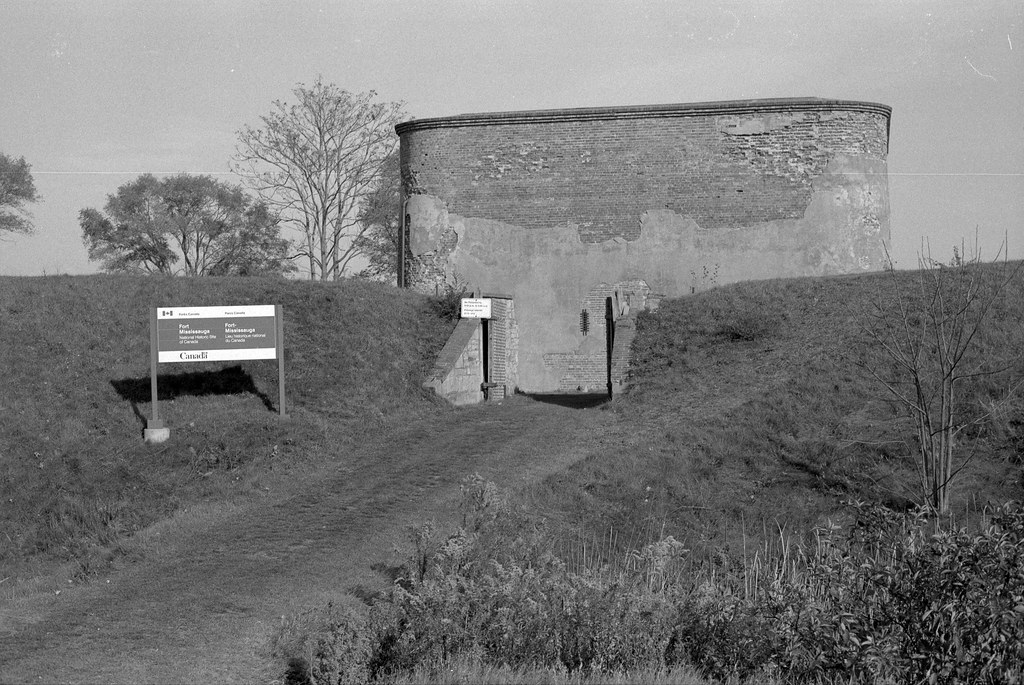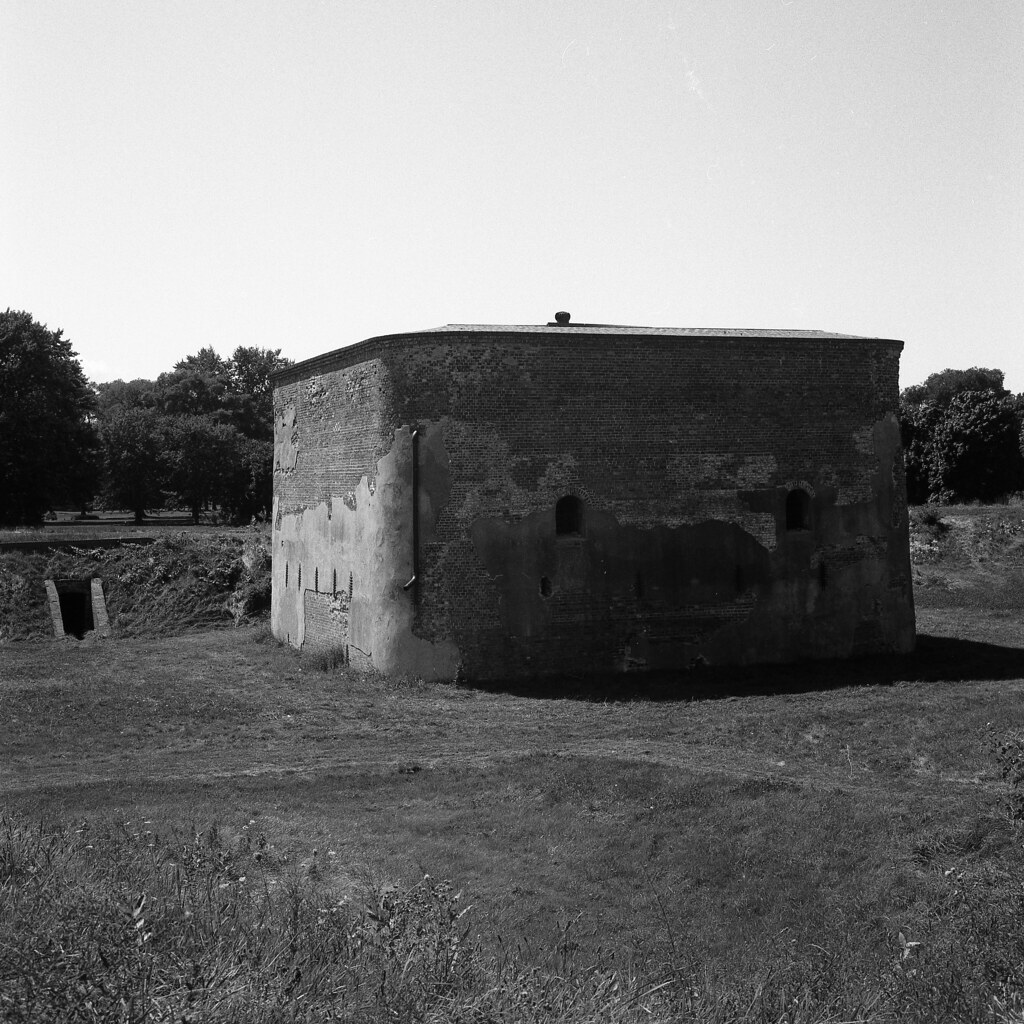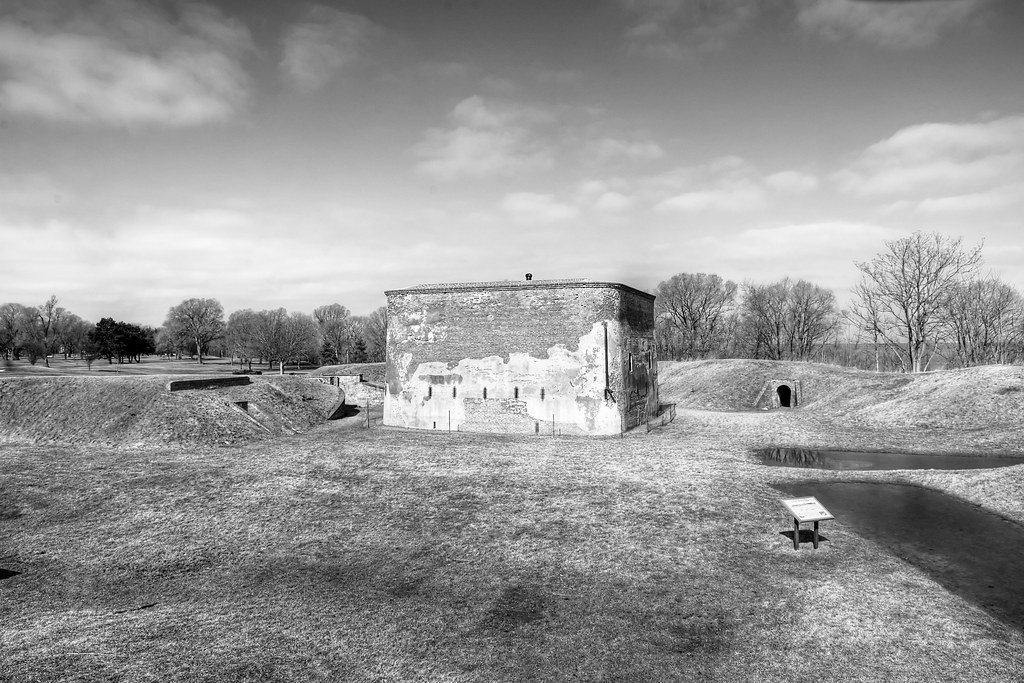When the Americans retreated across the river in December of 1813 they left nothing but a charred ruin of the town of Newark (Today’s Niagara-On-The-Lake) and Fort George. Left with no fortifications in the area, General Drummond immediately ordered the capture of Fort Niagara (which was a huge success) and the construction of new fortifications to defend the Canadian Side of the mouth of the Niagara River. Drummond, quick to realize that Fort George was too distant to command the river mouth ordered the new fort be constructed closer to Lake Ontario.

Nikon FA – AI-S Nikkor 50mm 1:1.4 – Kodak Panatomic-X – Blazinal (1+50) 10:00 @ 20C
Construction of the new Fort Mississauga commenced in spring of 1814. It consisted of a brick blockhouse built from materials salvaged from the old Lighthouse and the ruins of Newark; surrounded by an earthwork wall with two casemates acting as magazines, and a single stone gate on the side opposite from the river. Several smaller wooden structures were built inside the walls to house the officers and troops garrisoning the fort. Under the direction of the Royal Engineers, the Corps of Freemen of Colour (The Coloured Corps) constructed the new fort between 1814 and 1816. Despite this, the fort continued to see a garrison through the rough later half of the 19th century. The Upper Canada Rebellion in 1837, border disputes with the United States in 1854, and the American Civil War, then finally the Fenian Raids in 1866. By 1870 the need to maintain Fort Mississauga had cooled down, and relations between the newly created Dominion of Canada and the United States had improved vastly. The militia continued to operate the fort as a summer training camp. During the first half of the twentieth century, the fort became part of the larger Camp Niagara, which included old Fort George and Butler’s Barracks. The fort would see service as a training ground for the first, second, and Korean wars.

Bronica SQ-Ai – Zenzanon-PS 65mm 1:4 – Ilford FP4+ – HC-110 Dil. B 7:00 @ 20C
Fort Mississauga’s blockhouse and earthworks still stand today, surrounded by the oldest golf course in Canada. While it does not have staff on the site, it is open to the public. You are welcome to explore the area inside the earthworks. The blockhouse remains closed to the public and recently saw some vandalism. If you want a real trip back in time, be sure to walk through the river access Sallyport and be sure to note the names and dates carved into the brick that hasn’t been covered up by graffiti.

Nikon D300 – AF-S Nikkor 17-55mm 1:2.8G DX
With Files from:
Guidebook to the Historic Sites of the War of 1812 Second Edition by Gilbert Collins – 2006 The Dundurn Group Publishers
Web: war1812.tripod.com/fortmiss.html
Web: www.eighteentwelve.ca/?q=eng/Topic/25
Web: www.pc.gc.ca/lhn-nhs/on/fortgeorge/natcul/natcul2b.aspx